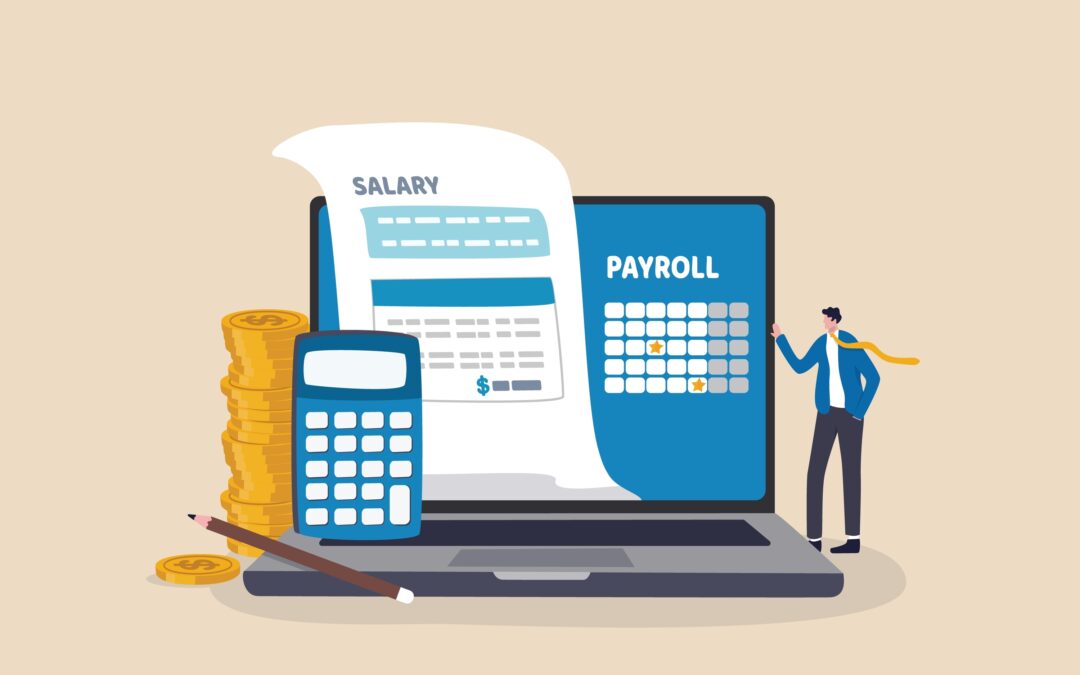
Benefits
Did you know that nearly 70% of employees report that benefits play a major role in their job satisfaction and retention? In today’s competitive job market, offering a competitive salary and benefits package is essential to attracting and retaining top talent. But with so many options available, it can be difficult for HR professionals to determine which benefits will have the greatest impact on their employees.
In this guide, we’ll explore the top employee benefits that attract and retain top talent, and provide actionable tips for creating a comprehensive benefits package.
Section I: Competitive Salary and Compensation
A competitive salary and compensation package is crucial to attract and retain top talent. In addition to meeting the basic needs of employees, it can also be a powerful motivator for increased productivity and engagement. Here are some strategies that small and medium-sized businesses can use to offer competitive compensation packages:
- Conduct regular benchmarking and market analysis to ensure that salaries are in line with industry standards and regional cost of living.
- Offer bonuses based on individual and team performance to incentivize high performance and encourage collaboration among team members.
- Consider profit-sharing or stock options to reward long-term loyalty and investment in the company.
Offering a competitive salary and compensation package shows employees that their contributions are valued, which can improve morale and job satisfaction.
Section II: Health and Wellness Benefits
Providing health and wellness benefits can improve employee well-being, reduce absenteeism, and boost productivity. Here are some benefits that small and medium-sized businesses can offer:
- Comprehensive health insurance that includes medical, dental, and vision coverage.
- Fitness memberships or wellness programs that encourage employees to adopt healthy habits and reduce stress.
- Mental health support, such as counseling services or an Employee Assistance Program (EAP), to help employees cope with work-related stress or personal issues.
By investing in employee health and wellness, companies can create a positive work environment and increase employee loyalty and retention.
Section III: Retirement and Financial Benefits
Planning for retirement and managing finances can be overwhelming for many employees. Offering retirement and financial benefits can alleviate stress and improve long-term financial planning. Here are some benefits that small and medium-sized businesses can provide:
- 401(k) plans with matching contributions, which can help employees save for retirement and provide a valuable benefit that employees often prioritize.
- Financial counseling or educational resources, which can help employees understand and manage their finances, including debt management, savings, and investment options.
- Life and disability insurance, which can help protect employees and their families from unexpected events and offer peace of mind.
By providing retirement and financial benefits, companies can demonstrate a commitment to employee well-being beyond just their time at work.
Section IV: Work-Life Balance Benefits
Achieving work-life balance is a top priority for many employees, particularly those with families. Providing work-life balance benefits can help employees manage their personal and professional lives more effectively. Here are some benefits that small and medium-sized businesses can offer:
- Flexible work arrangements, such as telecommuting or flexible schedules, which can help employees balance work and personal obligations.
- Generous paid time off, including vacation and sick leave, which can give employees the time they need to recharge and care for themselves and their families.
- Parental leave for new parents, including paternity and adoption leave, which can help employees balance work and family responsibilities during a major life transition.
Offering work-life balance benefits can help employees feel valued and supported, leading to increased job satisfaction and productivity.
Section V: Professional Development and Career Growth
Investing in professional development and career growth opportunities can demonstrate a commitment to employee success and improve retention rates. Here are some benefits that small and medium-sized businesses can offer:
- Ongoing training and development opportunities, including on-the-job training, mentoring, and coaching, which can help employees acquire new skills and knowledge.
- Tuition reimbursement for employees seeking to further their education, which can help employees advance their careers and contribute more to the company.
- A clear career path with opportunities for advancement and promotion within the company, which can motivate employees to achieve their goals and remain loyal to the company.
By investing in employee professional development and career growth, companies can improve employee engagement and retention rates, while also building a stronger workforce.
Key Summary
-
Offering a competitive salary and compensation package is essential for attracting and retaining top talent
-
Health and wellness benefits, such as comprehensive insurance and wellness programs, can improve employee well-being and productivity
-
Retirement and financial benefits, including 401(k) plans and financial counseling, can help employees plan for their future and alleviate stress
-
Work-life balance benefits, such as flexible work arrangements and generous paid time off, can improve employee morale and satisfaction
-
Professional development and career growth opportunities, such as training and tuition reimbursement, can demonstrate the company’s investment in employee success and retention
Offering a comprehensive benefits package is essential to attracting and retaining top talent in today’s competitive job market. By providing a competitive salary and compensation package, health and wellness benefits, retirement and financial benefits, work-life balance benefits, and professional development and career growth opportunities, HR professionals can create a benefits package that will help their organization stand out from the competition. Remember, the key to success is customizing your benefits package to meet the unique needs of your organization and employees, and effectively communicating these benefits to potential and current employees.

Compliance
Did you know that small businesses pay an average of $845 per year in IRS penalties due to payroll mistakes? That’s a lot of money that could be saved by avoiding common payroll errors. As an HR professional or small business owner, it’s essential to get your payroll right the first time. In this blog, we’ll cover the most common payroll mistakes and provide tips on how to avoid them.
Payroll is an integral part of any business, and mistakes can be costly. HR professionals and small business owners need to ensure they are following proper procedures to avoid penalties, compliance issues, and unhappy employees. In this blog post, we’ll provide you with the knowledge you need to avoid the most common payroll mistakes.
Today, we’ll be discussing the most common payroll mistakes that HR professionals and small business owners make and how to avoid them.
Misclassifying Employees
One of the most common payroll mistakes that businesses make is misclassifying employees as independent contractors. While it may seem like a simple mistake, misclassifying employees can have serious legal and financial consequences. Independent contractors are not entitled to the same benefits and protections as employees, and misclassifying an employee as a contractor can result in penalties, back taxes, and lawsuits. To avoid this mistake, make sure to properly classify all employees and contractors based on IRS guidelines.
Failing to Keep Accurate Records
Payroll records are a critical part of any business’s financial management. They document employee pay rates, hours worked, deductions, and taxes. Failing to keep accurate records can result in a host of problems, from underpaying employees to failing to file accurate tax returns. To avoid this mistake, invest in a reliable payroll software system that automatically tracks and records all payroll information.
Missing Deadlines for Tax Deposits and Filings
Payroll taxes must be deposited and filed on time to avoid penalties and interest charges. Missing deadlines can result in steep fines and even legal action. To avoid this mistake, establish a regular payroll tax deposit and filing schedule and stick to it. Make sure to also keep up with changes in tax laws and regulations to avoid any compliance issues.
Incorrect Calculation of Overtime Pay
Another common payroll mistake is incorrectly calculating overtime pay. Under the Fair Labor Standards Act (FLSA), non-exempt employees must receive overtime pay at a rate of 1.5 times their regular hourly rate for all hours worked over 40 in a workweek. Incorrectly calculating overtime pay can result in wage and hour violations and costly lawsuits. To avoid this mistake, ensure that all employees are classified correctly as exempt or non-exempt and that overtime is calculated correctly.
Overlooking Employee Benefits and Deductions
Employee benefits and deductions are an important part of the payroll process. These can include contributions to retirement plans, health insurance premiums, and wage garnishments. Overlooking these benefits and deductions can result in underpaid employees and non-compliance with tax laws. To avoid this mistake, ensure that all employee benefits and deductions are accurately accounted for in your payroll system.
Failure to Stay Up-to-Date with Employment Laws and Regulations
Employment laws and regulations are constantly changing, and failure to stay up-to-date with these changes can result in costly mistakes. For example, failing to comply with the Affordable Care Act (ACA) can result in steep fines and penalties. To avoid this mistake, make sure to regularly review and update your payroll policies and procedures to ensure compliance with all relevant laws and regulations.
Key Takeaways Summary:
-
Misclassifying employees can lead to costly legal issues.
-
Calculating overtime correctly is essential to avoid costly penalties.
-
Accurate record-keeping is crucial to staying compliant and avoiding fines.
-
Compliance with state and federal taxes is necessary to avoid costly penalties.
Avoiding payroll mistakes is critical for HR professionals and small business owners. By following proper procedures and understanding the common mistakes to avoid, you can save your company time, money, and legal headaches. Stay compliant and keep your employees happy by avoiding these common payroll mistakes. If your company still has payroll questions or concerns visit https://www.highflyerhr.com/contact-us/ today to see how we can make painroll painless!

Compliance, Guide
Did you know that small business owners spend an average of eight hours a month just on payroll processing? With compliance laws changing constantly, it can be tough to keep up. In fact, according to the Society for Human Resource Management, compliance with federal, state, and local laws is the top HR challenge for businesses.
As a small business owner or HR professional, payroll compliance is crucial to avoid costly penalties and legal issues. However, with so many laws and regulations to navigate, it can be overwhelming. That’s why we’ve put together this comprehensive guide to help you understand the basics of payroll compliance.
Federal Payroll Laws:
- Fair Labor Standards Act (FLSA): sets minimum wage, overtime pay, record-keeping, exemption status, and child labor standards for most employees in the private and public sectors.
- Federal Insurance Contributions Act (FICA): requires employers and employees to contribute to Social Security and Medicare.
- Federal Unemployment Tax Act (FUTA): requires employers to pay unemployment taxes, which go into a fund that provides benefits to eligible workers who lose their jobs.
State Payroll Laws:
- Minimum Wage: many states have their own minimum wage laws, which may be higher than the federal minimum wage.
- Overtime: some states have their own overtime laws, which may be more generous than federal law.
- Income Tax Withholding: most states require employers to withhold state income tax from employee paychecks.
- Unemployment Insurance: states have their own unemployment insurance programs, which employers must contribute to.
Local Payroll Laws:
- Paid Sick Leave: some cities and states require employers to provide paid sick leave to employees.
- Fair Workweek: some cities require employers to provide advance notice of work schedules and/or provide additional pay if schedules are changed at the last minute.
- Wage Theft Prevention: some cities require employers to provide notice to employees of their rights to minimum wage and overtime pay.
- Predictive Scheduling: some cities require employers to provide advance notice of schedules for hourly employees.
It’s important to note that these laws can vary widely from state to state and city to city. Employers need to be aware of the specific laws that apply to their business and ensure that they are in compliance. This may involve working with an HR consultant or payroll provider to ensure that payroll processing is accurate and that all necessary taxes and other deductions are being taken out of employee paychecks.
Tips for Ensuring Payroll Compliance:
- Stay up-to-date on changes in payroll laws: Payroll laws are constantly changing, so it’s important to stay informed about new laws or changes to existing ones. Subscribe to newsletters from government agencies, attend webinars or conferences, and stay in touch with industry associations to stay informed.
- Establish a payroll compliance checklist: Create a checklist of all the payroll tasks that need to be completed to ensure compliance. This should include things like verifying employee information, calculating taxes and deductions, and submitting payroll taxes on time.
- Train your payroll staff: Make sure your payroll staff is well-trained on all payroll laws and regulations that apply to your business. Provide regular training sessions and make sure they understand the importance of compliance.
- Use payroll software: Payroll software can help automate payroll processes and ensure compliance with payroll laws. Make sure you choose a software that is regularly updated to reflect changes in payroll laws.
- Perform regular audits: Regularly audit your payroll processes to ensure compliance. This can include reviewing payroll records, verifying employee information, and checking for errors or discrepancies.
- Seek professional help: If you’re not confident in your ability to manage payroll compliance on your own, consider hiring a professional to help. This could include a payroll consultant or a CPA who specializes in payroll.
By following these tips, you can help ensure compliance with payroll laws and avoid costly penalties and fines.
Key Takeaways Summary:
-
Payroll compliance is important for small business owners and HR professionals to avoid penalties and legal issues.
-
Federal, state, and local laws impact payroll compliance, and it’s important to be aware of the specific laws that apply to your business.
-
Staying up-to-date on changes in payroll laws, establishing a payroll compliance checklist, training your payroll staff, using payroll software, and performing regular audits can help ensure compliance.
-
Seeking professional help, such as a payroll consultant or CPA, can be an option for those who need additional support.
-
Accurate payroll processing and effective workforce management are key components of compliance.
Payroll compliance can be complex, but it’s essential for the success of your business. By understanding federal, state, and local laws, properly processing payroll, effectively managing your workforce, and engaging your employees, you can ensure compliance and avoid costly penalties. If your company still has payroll questions or concerns visit https://www.highflyerhr.com/contact-us/ today to see how we can make painroll painless!

Compliance
Did you know that small businesses pay an average of $845 per year in penalties for incorrect or late payroll tax filings and payments? Don’t let this be you. Read on for a guide on how to simplify your payroll tax processes.
Payroll tax filings and payments can be a headache for small business owners and HR professionals alike. With changing tax laws and regulations, it can be hard to keep up and ensure that your filings are accurate and timely. In this blog, we’ll break down the steps you need to take to simplify your payroll tax processes and avoid penalties.
In this blog post, we will guide HR professionals and small business owners on how to simplify their payroll tax filings and payments.
1. Understand Your Tax Obligations
Business owners need to understand their tax obligations to avoid errors and penalties. Start by researching which taxes you need to withhold and when to remit them. For example, federal income tax and Social Security tax have different deadlines for payment and filing. Familiarize yourself with federal and state tax laws, and stay up-to-date on any changes or updates. Additionally, you may want to consider consulting with a tax professional to ensure you’re meeting all obligations.
To fully understand your tax obligations, it’s important to keep up-to-date with any changes to tax laws and regulations. This means staying informed about new tax codes, deadlines, and other compliance requirements. You can stay informed by regularly checking the IRS website, attending tax seminars and conferences, or consulting with a tax professional. By staying informed, you can avoid costly penalties and minimize your risk of being audited.
2. Keep Accurate Records
Accurate record-keeping is essential for small businesses. Make sure you keep track of all employee information, including Social Security numbers, wages, and tax withholdings. Additionally, keep a copy of all tax filings and payments for at least four years, in case of an audit.
Consistent record-keeping is critical for payroll tax filings and payments. In addition to keeping track of employee information and tax withholdings, it’s important to keep detailed records of all payroll-related expenses, such as benefits and reimbursements. Make sure you have a system in place for tracking and organizing all payroll-related documents and receipts, such as timesheets, pay stubs, and tax forms. This will make it much easier to prepare and file your payroll tax returns
3. Remit Taxes on Time
Late or incorrect payroll tax payments can result in penalties and interest charges, so it’s important to remit taxes on time and in the correct amounts. You can also use the Electronic Federal Tax Payment System (EFTPS) to make federal tax payments, which is free and secure. Additionally, check with your state tax agency to see if they offer similar payment options.
To ensure you never miss a tax deadline, consider setting up automatic payments or reminders. This will help you stay on top of your payroll tax obligations and avoid costly penalties and interest charges. If you do miss a deadline or make a mistake on your tax return, don’t panic. You may be able to avoid penalties by promptly correcting the error and filing an amended return. Just be sure to take action as soon as possible to minimize the impact on your business.
4. Set Up a Payroll System
A payroll system can automate payroll calculations, tax withholdings, and reporting. Consider investing in payroll software, which can provide customized solutions for your business’s specific needs. Payroll software can also save you time and minimize errors, which can be costly in the long run. If you don’t want to invest in software, you can outsource your payroll to a third-party provider. This can also save time and money while ensuring that you’re meeting all tax obligations.
When setting up a payroll system, it’s important to consider the size and complexity of your business. If you have a small business with only a few employees, you may be able to handle payroll in-house using a simple spreadsheet. However, if your business is larger and more complex, you may want to consider investing in a more robust payroll software or outsourcing your payroll to a third-party provider. Look for a solution that offers features such as direct deposit, automatic tax calculations, and customizable reports.
Key Takeaways Summary:
-
Understand your tax obligations to ensure compliance
-
Keep accurate records for auditing purposes
-
Remit taxes on time to avoid penalties and interest charges
-
Set up a payroll system to automate calculations and minimize errors
Payroll tax filings and payments can be complicated, but by following these steps, HR professionals and small business owners can simplify the process and avoid costly penalties. Make sure to stay up-to-date on any changes to tax laws and regulations and invest in a payroll system to streamline your processes. With the right tools and knowledge, payroll tax filings and payments can be a breeze. Visit https://www.highflyerhr.com/contact-us/ or call (225) 930-8300 today to see how we can help!

Engaged Workforce
According to a recent Gallup poll, only 34% of U.S. employees are engaged at work, costing businesses an estimated $450-550 billion annually in lost productivity. As an HR or payroll professional, it’s crucial to understand why employee engagement is so important and how you can improve it in your workplace.
In today’s fast-paced business world, employee engagement has become a critical factor in achieving success. It’s no longer enough to simply provide employees with a paycheck and basic benefits. Companies must now focus on creating a positive work environment where employees feel valued, motivated, and invested in the company’s mission. This blog will explore the importance of employee engagement and provide practical tips for improving it in your workplace.
What is Employee Engagement?
Employee engagement refers to the extent to which employees are emotionally invested and committed to their work, their organization, and its goals. Engaged employees are passionate about their work, motivated to do their best, and feel a sense of ownership and responsibility for the success of the company. They have a positive attitude towards their job and are willing to go above and beyond what is expected of them.
The Cost of Disengaged Employees and the Benefits of Engaged Employees Disengaged employees can cost a company up to 34% of their salary in lost productivity, according to a Gallup study. On the other hand, engaged employees are 87% less likely to leave their company and are more likely to refer new talent to the company. By investing in employee engagement, companies can save money on recruitment and retain top talent, leading to increased profitability.
Effective Strategies for Improving Employee Engagement
Communication: Regularly communicate with employees through town hall meetings, team meetings, newsletters, and one-on-one conversations. Encourage open and honest feedback, and respond to employee concerns and suggestions in a timely manner.
Recognition: Develop a recognition program that rewards employees for their hard work and contributions. This could include awards, bonuses, public recognition, and other incentives.
Professional Development: Provide opportunities for employees to learn and grow in their roles through training programs, mentorship, and career development plans.
Work-Life Balance: Offer flexible work arrangements such as telecommuting, flexible hours, and paid time off. Encourage employees to take breaks and prioritize self-care.
Feedback: Provide regular feedback to employees about their performance and progress, and encourage them to provide feedback to management as well. Use employee surveys and other tools to gather feedback and track engagement levels.
Integrating Employee Engagement into HR and Payroll Practices
Recruitment: Develop a recruitment strategy that emphasizes engagement and culture fit, such as using behavioral interviewing techniques to identify candidates who are likely to be engaged and committed to the company’s values. Provide a positive candidate experience by communicating clearly about the company’s culture and values, and providing timely feedback throughout the hiring process.
Payroll and Benefits: Offer competitive compensation and benefits packages that align with employee needs and values. Consider offering flexible benefits options, wellness programs, and other incentives that support employee well-being and engagement.
Local HR Consulting Services: Partner with a local HR consulting service to gain expert guidance and insights on employee engagement initiatives. These services can help develop engagement strategies, implement engagement programs, and track engagement levels over time.
Key Takeaways Summary:
-
Employee engagement is crucial for business success, impacting productivity, retention, and customer satisfaction.
-
Effective strategies for improving engagement include communication, recognition, professional development, work-life balance, and feedback.
-
HR and payroll professionals can integrate employee engagement into their practices through recruitment, payroll and benefits, and local HR consulting services.
Prioritizing employee engagement in your workplace is crucial for driving business success. By creating a positive work environment where employees feel valued and invested, you can improve productivity, retention, and customer satisfaction. Implementing effective engagement strategies and integrating engagement into HR and payroll practices is key to achieving this goal. If your company still has payroll questions or concerns visit https://www.highflyerhr.com/contact-us/ today to see how we can make painroll painless!

Communication Strategies, Company Culture, Employee Handbook
No. An employee wanting to change their hours because they got a second job is not something you’re required to accommodate. Even so, we wouldn’t recommend immediately giving the employee an ultimatum to keep working their current schedule or resign. Instead, we’d suggest talking with your employee about different options to see what you can make work. They may have some scheduling flexibility with their new job. One of their coworkers at your organization may be willing to change or swap their shift. There may also be additional shifts with your organization they could work instead of seeking additional income elsewhere.
If you exhaust these options and are still unable to accommodate the employee’s requested schedule change, you may just need to tell the employee no and let them decide what to do.
(more…)







